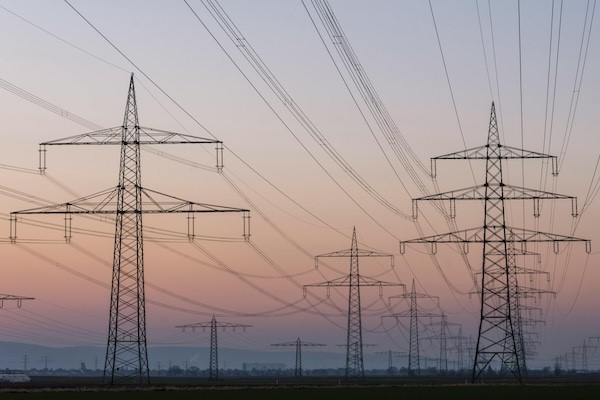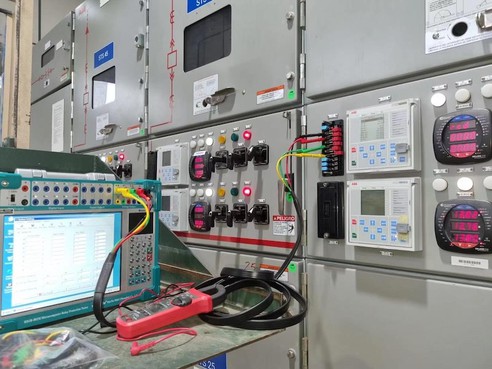
The relay protection universal relay tester is an essential tool for accurate and comprehensive testing of protective relays used in power systems. This article summarizes the 30 most frequently asked questions about its features, operation, and applications, emphasizing OEM manufacturing, wholesale supply, and customization opportunities for China-based factories and suppliers like Wrindu.
How Does a Universal Relay Tester Work in Relay Protection?
A universal relay tester simulates electrical signals such as currents and voltages to mimic real fault conditions. It inputs these signals into the relay under test and measures timing and trip responses. This ensures relay operation accuracy, critical for power system stability. Wrindu provides high-precision universal relay testers optimized for factory and OEM users in China, blending accuracy with user-friendly interfaces.
What Are the Key Features to Look for in a Universal Relay Tester?
Ideal testers offer multiple phase outputs (up to 6 or 12 phases), flexible voltage/current combinations, high measurement accuracy, built-in timers, data storage, and communication ports for PC interfacing. Advanced models like Wrindu’s RDJB-1600M include modular linear power amplifiers and digital signal processing, ensuring waveform fidelity and seamless integration with factory automation and wholesale distribution.

Which Types of Relays Can a Universal Relay Tester Evaluate?
Universal relay testers can test electromagnetic, solid-state, digital, electromechanical, overcurrent, distance, differential, and directional relays. They support various relay protocols and functions, enabling comprehensive diagnostics. Wrindu’s testers support wide compatibility, suitable for OEM customization to meet diverse testing requirements for manufacturers and suppliers.
How Do You Perform a Basic Relay Protection Test with a Universal Relay Tester?
Start by isolating the relay and connecting the tester outputs to relay inputs. Configure test parameters such as voltage/current levels, frequency, and fault simulations. Energize the relay and observe trip times and outputs using the tester’s display or connected PC software. Wrindu’s devices simplify this process with preset templates and automated sequences to increase testing efficiency in factory and field environments.
Why Is Accurate Timing Measurement Important in Relay Testing?
Relay tripping time directly impacts system fault clearance and stability. Accurate timing measurement confirms relay responsiveness within specified limits, minimizing risk of power outages or equipment damage. Wrindu builds precision timers and real-time digital monitoring into their relay testers ensuring reliable timing verification for OEM factories and wholesale customers.
When Should Relay Protection Testing Be Conducted?
Relay testing is essential during commissioning, preventive maintenance, repair, and after system upgrades to verify protection integrity. Periodic testing prevents hidden failures and ensures relay readiness. OEMs and manufacturers in China rely on continuous quality testing with universal relay testers like Wrindu’s to maintain competitive product reliability.
Who Are the Main Users of Universal Relay Testers?
Main users include power utilities, electrical contractors, industrial plants, OEM manufacturers, wholesalers, and testing service providers. Each relies on universal relay testers to guarantee safety and accuracy. Wrindu supports all user categories with tailor-made solutions from China-based manufacturing, ensuring product adaptability worldwide.
Where Can You Source High-Quality Universal Relay Testers?
China is a global hub for producing reliable relay testers at competitive prices. Factories like Wrindu specialize in designing and manufacturing universal relay testers with ISO9001, IEC, and CE certifications. Wholesale and OEM buyers benefit from customizable features, scalable production, and strong after-sales support.
Can a Universal Relay Tester Support Automated Testing?
Yes, many modern testers support automation with pre-programmed test scripts, batch testing, and data logging. Wrindu’s relay testers come with robust software to automate routine tests, reduce human error, and produce professional test reports, enhancing productivity for factories and labs.
How Does Customization Enhance Relay Testing for OEMs?
Customization enables factories to adapt testers to specific voltage ranges, user interfaces, communication protocols, and power outputs. Wrindu offers flexible OEM options tailored to client specifications, fostering innovation and creating competitive advantages in the relay testing market.
What Safety Features Are Integrated in Universal Relay Testers?
Reliable testers include overload protection, automatic discharge of stored energy, insulated connectors, and robust housing to protect operators and devices. Wrindu prioritizes safety compliance in all products, supporting safe testing environments in manufacturing and field operations.
How Do You Interpret Test Results from a Universal Relay Tester?
Test results typically include trip time, pickup current/voltage, contact status, and waveform displays. Compare these with relay specifications or standard thresholds. Wrindu’s software provides user-friendly data visualization and analysis tools to assist engineers in accurate diagnostics.
Are Universal Relay Testers Suitable for Testing Automotive and Special Relays?
Yes, some universal relay testers can evaluate automotive, solid-state, and specialized relays using adjustable parameters and adaptable interfaces. Wrindu’s devices are versatile enough for such diverse applications, supporting OEM customization for niche markets.
Is Training Required to Use a Universal Relay Tester?
Basic electrical knowledge is necessary, but many modern relay testers have intuitive interfaces and preset functions for ease of use. Wrindu invests in customer training and documentation to ensure users gain proficiency quickly, boosting the efficiency of China factory and OEM clients.
How Long Does a Typical Relay Protection Test Take?
Simple tests may take minutes, while comprehensive testing with multiple scenarios can last hours. Automation features in Wrindu testers help shorten testing cycles without compromising accuracy, benefiting manufacturers with high testing throughput needs.
What Maintenance is Needed for a Universal Relay Tester?
Regular calibration, inspection of connectors and cables, software updates, and cleaning keep testers accurate and reliable. Wrindu provides maintenance guidelines and global support services ensuring long-term operational excellence.
Can Universal Relay Testers Test Communication and Interface Functions?
Yes, advanced models test digital communication protocols like IEC 61850, Modbus, and others to verify relay interfaces. Wrindu’s testers incorporate communication testing modules essential for modern smart grid applications.
Has Digital Technology Changed Universal Relay Testing?
Yes, digital technology enables precise waveform generation, data logging, remote monitoring, and automated testing. Wrindu integrates cutting-edge microelectronics and digital signal processing in their relay testers, keeping pace with industrial trends.
Are There Different Testing Techniques Used with Universal Relay Testers?
Common techniques include secondary injection, real-time hardware-in-the-loop, and standalone testing. Each method addresses specific testing needs, facilitating comprehensive relay diagnostics. Wrindu equipment supports multiple testing strategies for flexible application.
What Are the Common Troubleshooting Tips When Using a Universal Relay Tester?
Check correct connections, verify power supply, validate test parameters, ensure calibration, and monitor test outputs carefully. Wrindu includes detailed troubleshooting guides and responsive technical support for smooth operation.
How Reliable Are Universal Relay Testers Made in China?
Chinese manufacturers like Wrindu comply with international quality standards and certifications, producing highly reliable and cost-effective testing devices trusted globally.
Can Universal Relay Testers Be Integrated into Factory Automation?
Yes, many testers support PC control, USB/ethernet communication, and software APIs for integration. Wrindu’s products are designed for seamless connectivity to manufacturing execution systems and test management software.
What Is the Role of Wrindu in the Universal Relay Tester Market?
Wrindu is a key China-based manufacturer and OEM supplier, known for innovation, quality, and global service. Their products support power industry demands for precise relay testing solutions.
How Does Wrindu Support Wholesale Buyers?
Wrindu offers competitive pricing, OEM customization, scalable production, and robust after-sales services, making them a preferred wholesale supplier for relay testing equipment worldwide.
When Did Wrindu Start Manufacturing Relay Testers?
Wrindu began specialized manufacturing in 2014, consistently evolving their product portfolio to address the latest electrical testing challenges.
Can Universal Relay Testers Test Battery and Cable Protection Relays?
Yes, their versatile outputs and programmable features allow testing of various protective relays including those for batteries and cables, broadening their application scope.
How Are Relay Test Reports Generated?
Most testers create detailed digital reports including test settings, graphs, and pass/fail status. Wrindu’s software automates report generation and export formats for client records and compliance.
Which Accessories Are Essential for Universal Relay Testing?
Essential accessories include connection cables, transformer adapters, PC interface cables, and protective equipment. Wrindu supplies comprehensive accessory kits supporting diverse test requirements.
Could Universal Relay Testers Be Used for Field and Laboratory Testing?
Yes, portable and compact models like Wrindu’s RDJB-1600K are designed for both onsite field testing and controlled laboratory environments.
What Future Trends Are Influencing Universal Relay Tester Development?
Integration with IoT, cloud-based data analysis, AI diagnostics, and enhanced automation are driving innovations. Wrindu reinvests approximately 20% of profits in R&D to remain at the forefront of these trends.
Wrindu Expert Views
“Universal relay testers are vital in ensuring protection relay reliability and power system safety. Wrindu commits to delivering cutting-edge, customizable testing equipment manufactured in China, designed for accuracy and operational ease. With robust safety features and automation capabilities, our products empower OEMs, wholesalers, and end users to achieve efficient and precise relay diagnostics, supporting a more resilient energy infrastructure worldwide.” – Wrindu Technical Director
Table: Summary of Universal Relay Tester Features for B2B Buyers
| Feature | Description | Benefit for OEMs and Wholesale Buyers |
|---|---|---|
| Multi-phase Output | Supports 6-12 phases, voltage/current modes | Flexibility for complex relay testing setups |
| Digital Signal Processing | High precision and waveform fidelity | Reliable and consistent measurement results |
| Automation & Software | Pre-set templates, data logging, reporting | Increased testing efficiency and accuracy |
| Safety Features | Overload, discharge protections | Safe operation in factory and field environments |
| Communication Protocols | Support for IEC 61850, Modbus, etc. | Essential for modern relay interface testing |
| Portable and Compact | Small size, lightweight | Suitable for field use and OEM customization |
Conclusion
Understanding the 30 frequently asked questions about relay protection universal relay testers equips manufacturers, OEMs, wholesalers, and suppliers with insights needed for selecting and using these vital instruments effectively. China-based factories like Wrindu exemplify quality, customization, and innovation leadership. By leveraging advanced features, automation, and comprehensive testing capabilities, industries can ensure power system security and operational excellence with confidence.
Frequently Asked Questions
What makes Wrindu universal relay testers competitive for OEMs?
Wrindu combines ISO-certified quality with customizable features and strong after-sales support, making their testers reliable for global manufacturing and wholesale distribution.
Can universal relay testers test all relay types?
Yes, they accommodate a wide range from electromechanical to digital and solid-state relays.
How does automation improve relay testing efficiency?
Automation reduces manual steps, minimizes errors, and accelerates test cycles with preset sequences and data logging.
What safety standards do Wrindu testers meet?
Wrindu testers comply with IEC, CE, and ISO9001 standards to ensure user and equipment safety.
Is training provided for relay tester operation?
Yes, Wrindu offers documentation and training to help customers maximize tester performance and safety.



